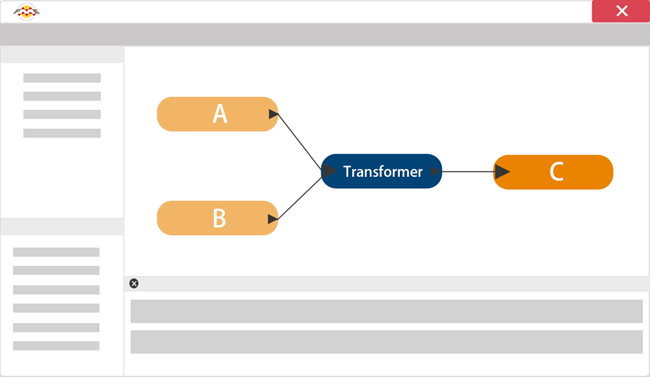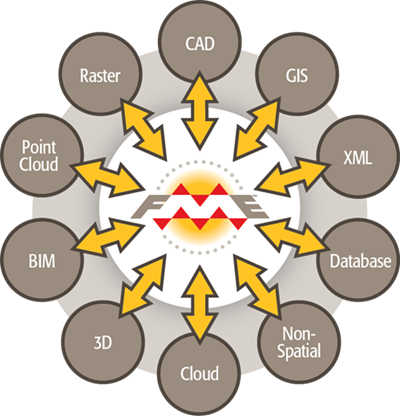What is FME?
FME (the Feature Manipulation Engine) is a data translation and transformation tool for solving problems of data interoperability, without the need for coding.
Safe Software created FME in 1993 to aid forestry companies exchange maps with the British Columbia provincial government. It was technically possible to share maps then, but only after hours of fighting with the data and often much information was lost. FME was built for better data integration: allowing the exchange of maps in different formats without losing any information.
FME is still used widely in forestry and other industries using Geographic Information Systems (GIS) for mapping and spatial analysis. The scenarios in this module are based on GIS use-cases, but the skills covered are widely applicable to any industry that requires data manipulation. If you would like to learn more about GIS, these articles from the University of Wisconsin and GIS Lounge provide useful information.
FME Products
This module covers using FME Desktop for data translations and transformations at the desktop level. FME Desktop is one piece of software in a larger ecosystem:
- FME Desktop lets you connect and transform data.
- For example, taking an Excel spreadsheet of business information and addresses and adding it to a database of neighborhood demographic information stored in a Geographic Information System.
- FME Server provides enterprise-level automation.
- For example, allowing business licensing officers working for a city government to add new business licenses to the database created in Desktop in real time by sending an email or filling out a web form.
- FME Cloud is the hosted version of FME Server.
- For example, the server that carries out the operation in the example above could be hosted in the cloud, rather than directly by the City.
FME Desktop consists of a number of different tools and applications. The two key applications are FME Workbench and the FME Data Inspector. We will cover FME Workbench and FME Data Inspector in the Lab Demonstration.
Extract, Transform, and Load
FME is sometimes classed as an ETL application. ETL stands for Extract, Transform and Load. It is a data warehousing tool that extracts data from multiple sources (here A and B), transforms it to fit the users’ needs and loads it into a destination (C):

While most ETL tools process only spreadsheet (i.e. tabular) data, FME also has the processing capabilities required to handle spatial data, hence the term Spatial ETL.
How FME Works
At the heart of FME is an engine that supports an array of spatial and tabular data types and formats; GIS, CAD, BIM, Point Cloud, XML, Raster, databases, and many more.
The capability to support so many data types is made possible by a rich data model that handles all possible geometry and attribute types.

Most importantly, the data translation process is seamless to the user; FME automatically converts between data types as required, and automatically substitutes one attribute or geometry type for another where the destination format does not support it.
Data Translation
FME can both translate and transform data.
At its heart, FME is a data translation tool, and this is usually the first aspect users wish to learn about.
Data translation consists of taking data in one format and translating it into another format. For example, taking a Word document (.docx file format) and turning it into a Portable Document Format (.pdf). Ideally, the process of data translation will preserve all or as much information from the source data as possible.
Incompatible data formats are a major barrier to moving data between systems. FME’s data translation or conversion capabilities ensure data can be used effectively in many applications.
Data Transformation
FME also can change or transform your data. For example, maybe you want to remove references to a list of confidential names as you translate your data from .docx to .pdf. Or, to draw on the earlier example, maybe you want to get an email or SMS alert every time a new business license is added to the city database in a certain neighborhood. You can do this using data transformation.
| Miss Vector says... |
|
Attention students! I'm Miss Vector, FME schoolteacher. I'm here to test you on FME. I hope you don't get these questions wrong!
Q) ETL is an acronym for...? 1. Extra-Terrestrial Lifeform 2. Extract, Transform, Load 3. Express Toll Lane 4. Eat, Transform, Love Q) FME can seamlessly translate between so many formats because it has... 1. A sentient data dictionary 2. A retro-encabulator 3. A rich data model 4. A core of unicorn hairs |